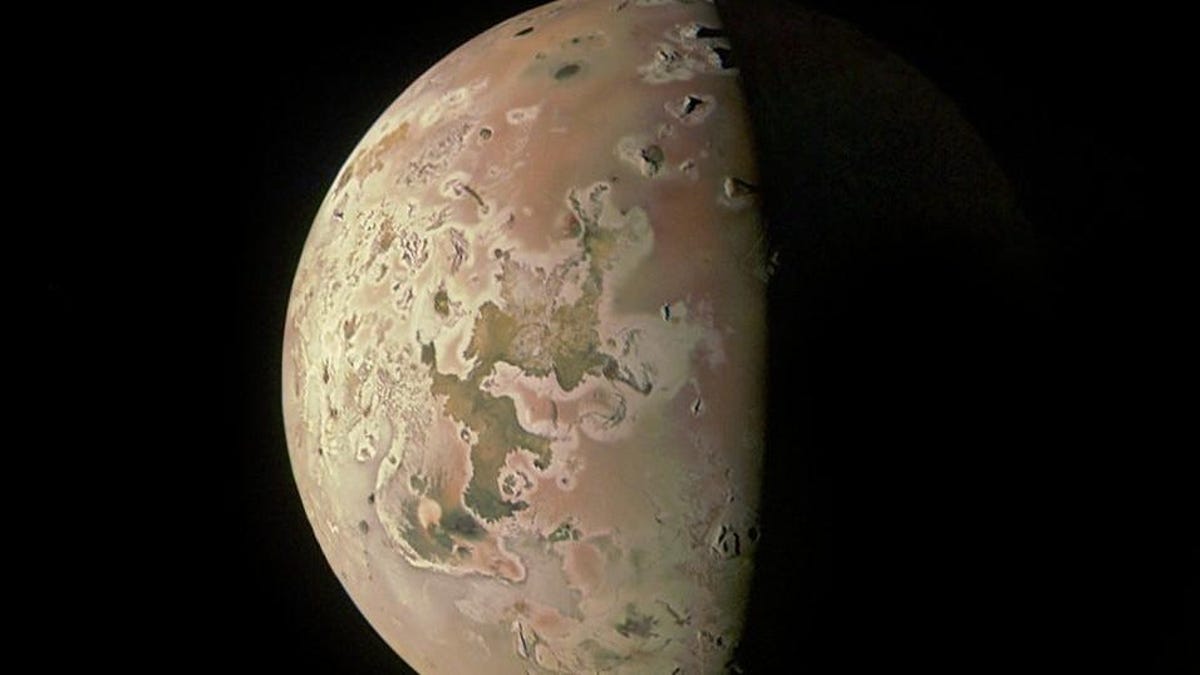After years of capturing the massive world of Jupiter, the Juno spacecraft has recently turned its attention to its Jovian moons. During a close flyby of Jupiter’s spookiest moon, Juno imaged the charred surface of a volcanic world caught in a haunting gravitational tug.
Are Fans Tired of Marvel and DC? Superhero Fatigue at NYCC 2023
This week, NASA shared new images taken by the Juno spacecraft during its flyby of Jupiter’s moon Io on October 15. The images reveal an ominous view of the most volcanically active world in the solar system, which has clearly been through a lot over the past 4.5 billion years.
Image: NASA/JPL-Caltech/SwRI/MSSS/Kevin M. Gill
Images captured by Juno are released to the public through the mission’s website, and often times data visualization artists work their magic on the raw data to create beautiful renderings. This one above was processed by software engineer Kevin Gill, while the one below was edited by Ted Stryk.
Image: NASA/JPL-Caltech/SwRI/MSSS/Ted Stryk
This is perhaps the clearest view we’ve seen of Io as the Juno spacecraft inches its way closer to the moon. The surface of the moon is mangled by hundreds of volcanoes and lakes of molten silicate lava, which is why the moon appears burnt as though it had been through enormous torment.
Image: NASA/JPL-Caltech/SwRI/MSSS/Kevin M. Gill
The moon is wedged between Jupiter’s immense gravitational force, as well as the gravitational tug of its sister moons Europa and Ganymede. As a result, the moon is constantly being stretched and squeezed, which contributes to its volcanic activity.
NASA’s Juno spacecraft, which has been studying the Jovian system since 2016, observed Io during previous flybys in May and July. Juno also captured a cozy family photo of Jupiter and Io in September, revealing the gas giant and its moon side by side. The next time Juno approaches the volcanic world will be on December 30, as well as February 1, 2024, and then again on September 20, 2024, approaching the haunting world with caution to gather more data on its activity.
As the innermost of Jupiter’s large moons, Io is the main source of most of the charged particles in the planet’s magnetosphere, creating a donut-shaped cloud of ions and electrons that surround Jupiter. The cloud, known as Io Plasma Torus, is formed when atmospheric gases escaping from Io are ionized.
During upcoming flybys, scientists from the Southwest Research Institute (SwRI) will use the Hubble and James Webb telescopes to simultaneously observe the Jovian moon from a distance.
For more spaceflight in your life, follow us on X (formerly Twitter) and bookmark Gizmodo’s dedicated Spaceflight page.
